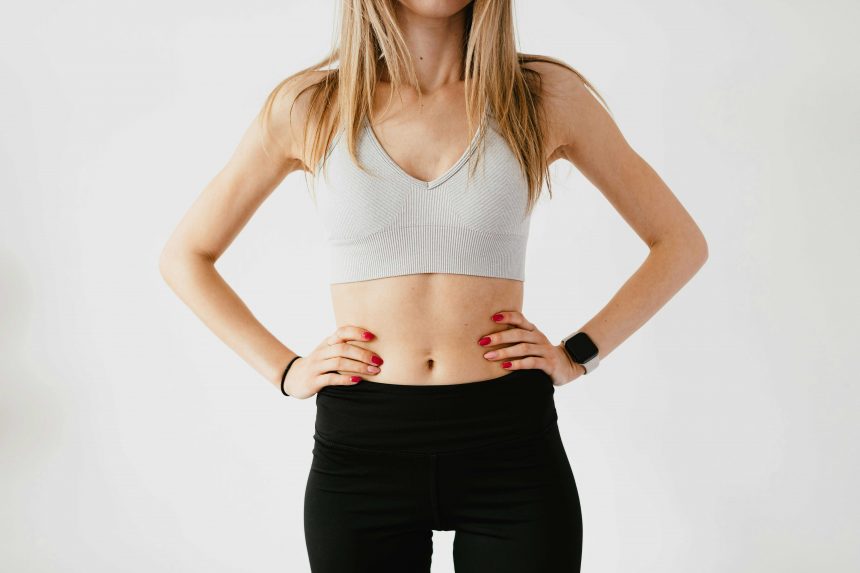As athletic apparel continues to evolve, the impact of sports bra design on athletic performance and comfort becomes increasingly significant. A recent study by Dartmouth College delves into this relationship, particularly focusing on the tightness of the under-band of sports bras and its effects on respiratory function during exercise. This research provides critical insights into how minor adjustments in apparel fit can have substantial implications for the physiology and performance of female athletes.
The study meticulously explored the effects of different tightness settings on the breathing patterns of highly trained female runners. By assessing parameters like oxygen uptake and respiratory mechanics under varying conditions of under-band tightness, the researchers aimed to unravel the complex interactions between clothing fit and exercise efficiency. This not only sheds light on the immediate impacts on performance but also helps in formulating guidelines for sports bra design that could enhance both comfort and capability during physical activities.
With a rigorous approach combining laboratory analyses and practical evaluations, this study paves the way for future research and development in sports apparel, emphasizing the importance of tailored fit in enhancing athletic output. By examining the intricate balance between comfort and functionality, Dartmouth’s findings contribute to a deeper understanding of the optimal conditions under which athletes can perform their best while maintaining health and safety.
Nine highly trained female runners possessing normal pulmonary function were recruited as participants for this study. They underwent maximal and submaximal running sessions under three different conditions of under-band restriction: loose, self-selected, and tight. The data collected from these sessions unveiled significant findings shedding light on the interplay between under-band pressure and respiratory dynamics.
During maximal exercise, it was observed that the tight condition elicited a notably higher mechanical work of breathing compared to the loose condition. This difference underscores the impact of under-band pressure on the effort required for breathing, potentially affecting overall performance and endurance during intense physical activity. Additionally, the tight condition led to a 5% increase in minute ventilation, indicating a heightened respiratory response to the constraints imposed by the sports bra under-band.
In the context of steady-state submaximal running, the study uncovered a modest yet significant increase in oxygen uptake in the tight condition compared to the loose condition. This finding underscores the subtle but tangible influence of under-band pressure on oxygen utilization, with potential implications for endurance and running economy.
The implications of these findings extend beyond mere athletic performance. The study suggests that the pressure exerted by sports bra under-bands, particularly when self-selected by women, has the potential to compromise respiratory mechanics during exercise. By loosening the under-band pressure, individuals may experience a reduction in breathing work and a shift towards a more efficient ventilatory pattern characterized by deeper, less frequent breaths. Moreover, the observed decrease in submaximal oxygen uptake in the loose condition implies an improvement in running economy, emphasizing the importance of optimizing sports bra fit for both performance and physiological well-being.
This study elucidates the intricate interplay between sports bra under-band tightness and respiratory function during exercise. Quantifying the effects of under-band pressure on breathing mechanics and oxygen uptake provides valuable insights for athletes and sports apparel designers alike. Moving forward, a deeper understanding of these interactions can inform the development of sports bras that not only offer optimal support but also promote respiratory efficiency and enhance athletic performance.
Expanding upon the implications and potential avenues for further research, it is crucial to delve into the broader context of how sports bra design can be optimized to enhance both comfort and performance for female athletes. While this study focused primarily on the effects of under-band tightness on respiratory function, future investigations could explore additional factors such as strap tension, fabric composition, and overall garment fit.
One promising direction for future research is the examination of individualized fitting approaches for sports bras. Considering the diverse anatomical variations among women, a one-size-fits-all approach may not adequately address the unique needs and preferences of each athlete. Implementing technologies such as 3D body scanning or advanced biomechanical modeling could facilitate the development of customized sports bras tailored to individual body shapes and performance requirements.
Moreover, exploring the influence of sports bra design on other physiological parameters beyond respiratory function could provide a more comprehensive understanding of its impact on athletic performance. For instance, investigating the effects of under-band pressure on cardiovascular dynamics, thermal regulation, and muscle activation patterns could offer valuable insights into the holistic effects of sports bra wear during exercise.
Considering the potential psychological factors influencing sports bra selection and usage is essential for promoting overall athlete well-being. Issues such as body image, comfort preferences, and perceived exertion may interact with garment design to impact performance and adherence to exercise regimens. Exploring the psychosocial aspects of sports bra fit and comfort through qualitative research methods could yield valuable insights into the broader implications of apparel design on athlete satisfaction and motivation.
Incorporating interdisciplinary perspectives into future research endeavors is also paramount for advancing our understanding of sports bra design and its implications for athletic performance. Collaboration between experts in fields such as biomechanics, physiology, textile engineering, and psychology can foster innovative approaches to sports apparel design that prioritize both functionality and user experience.
While this study provides valuable insights into the effects of sports bra under-band tightness on respiratory function during exercise, there is still much to be explored in this evolving field. By adopting a multidisciplinary approach and leveraging emerging technologies, researchers can continue to push the boundaries of sports bra design, ultimately enhancing the comfort, performance, and well-being of female athletes across diverse sporting disciplines.






